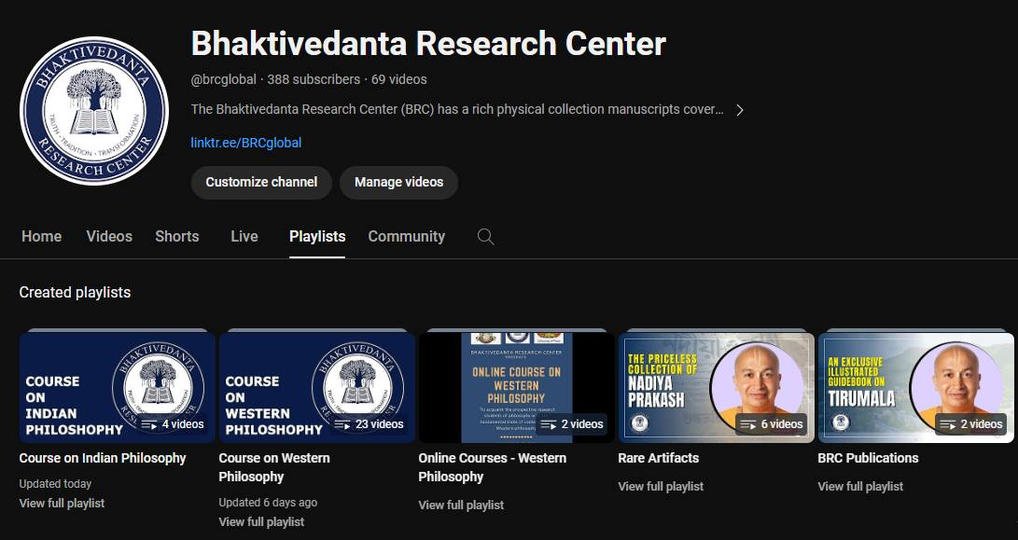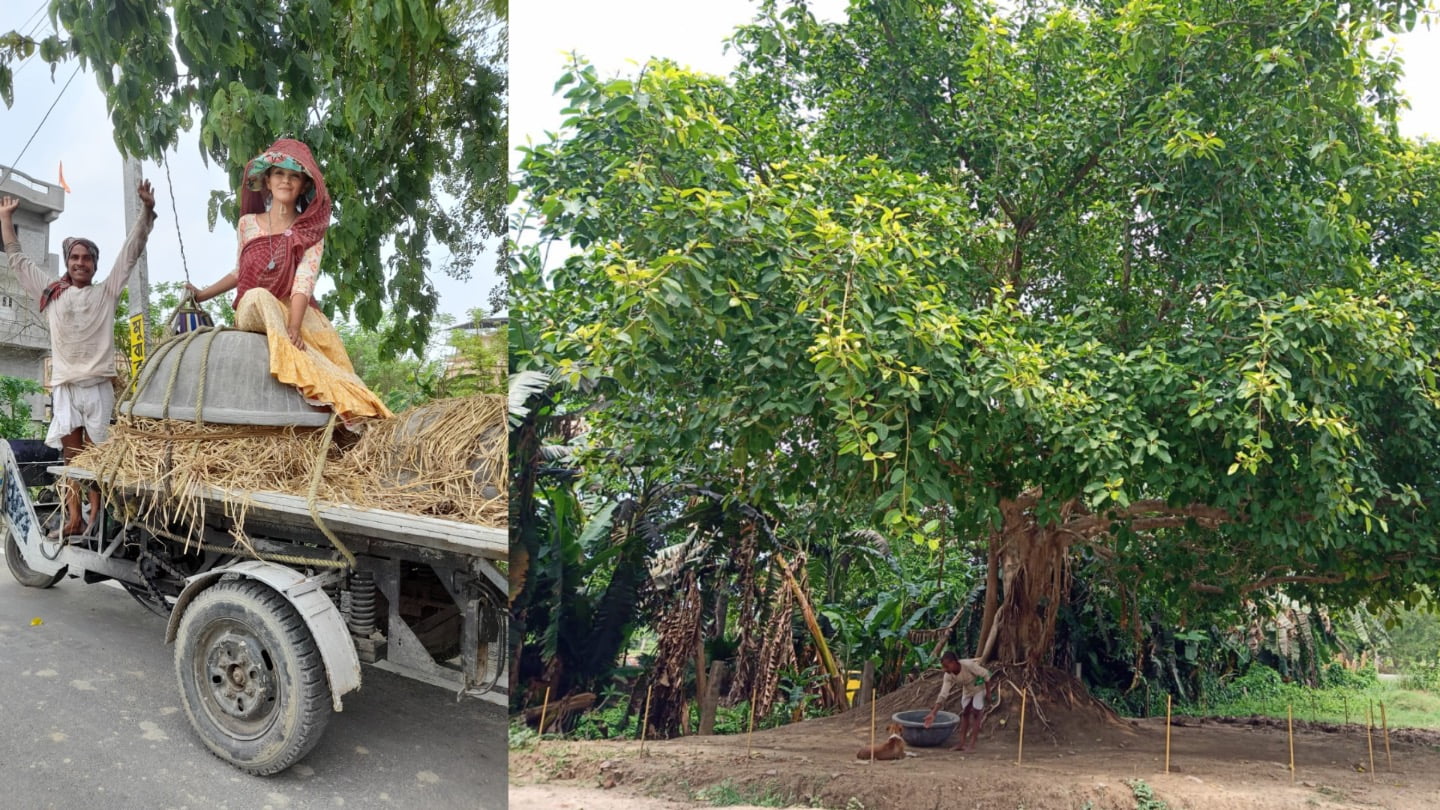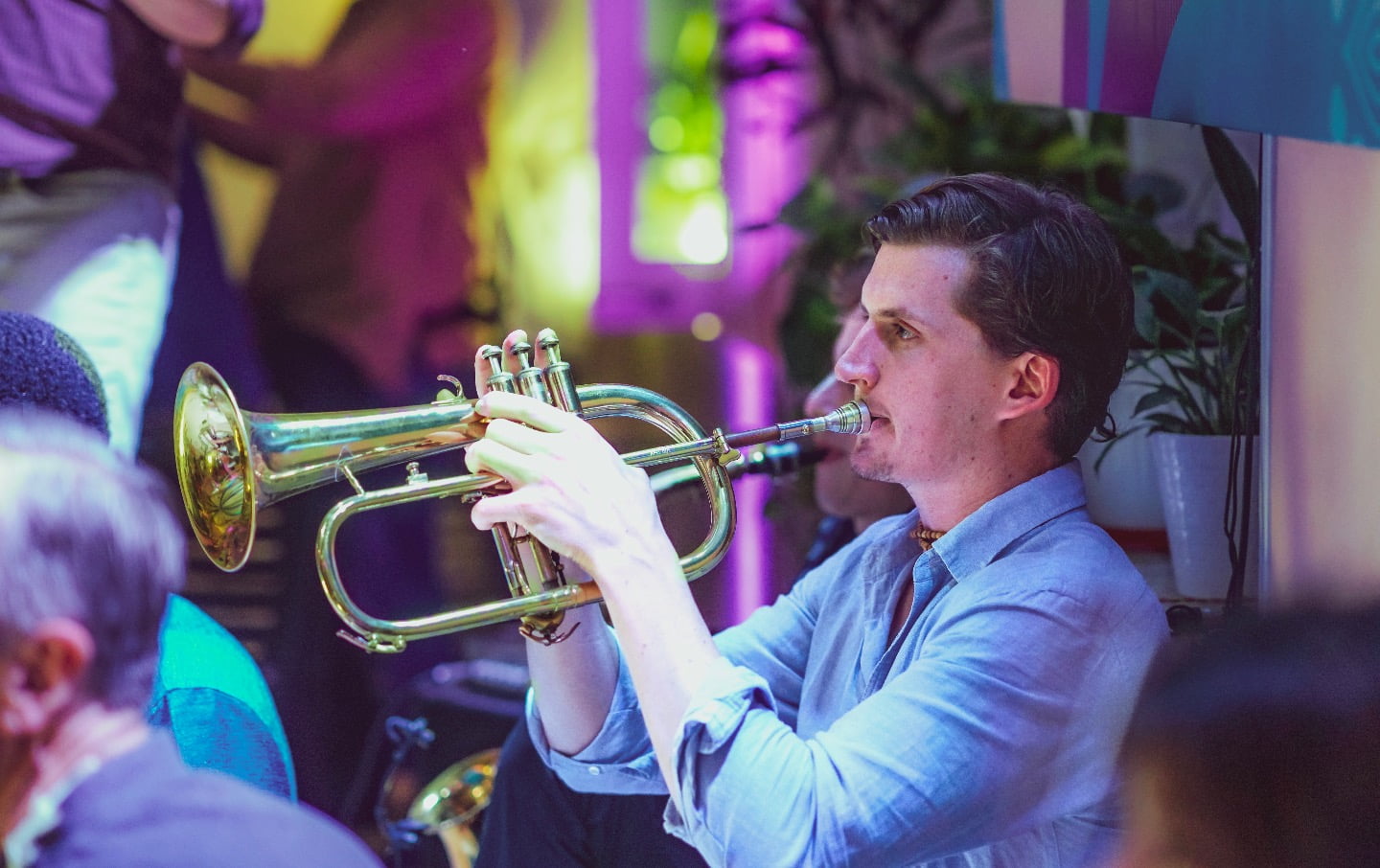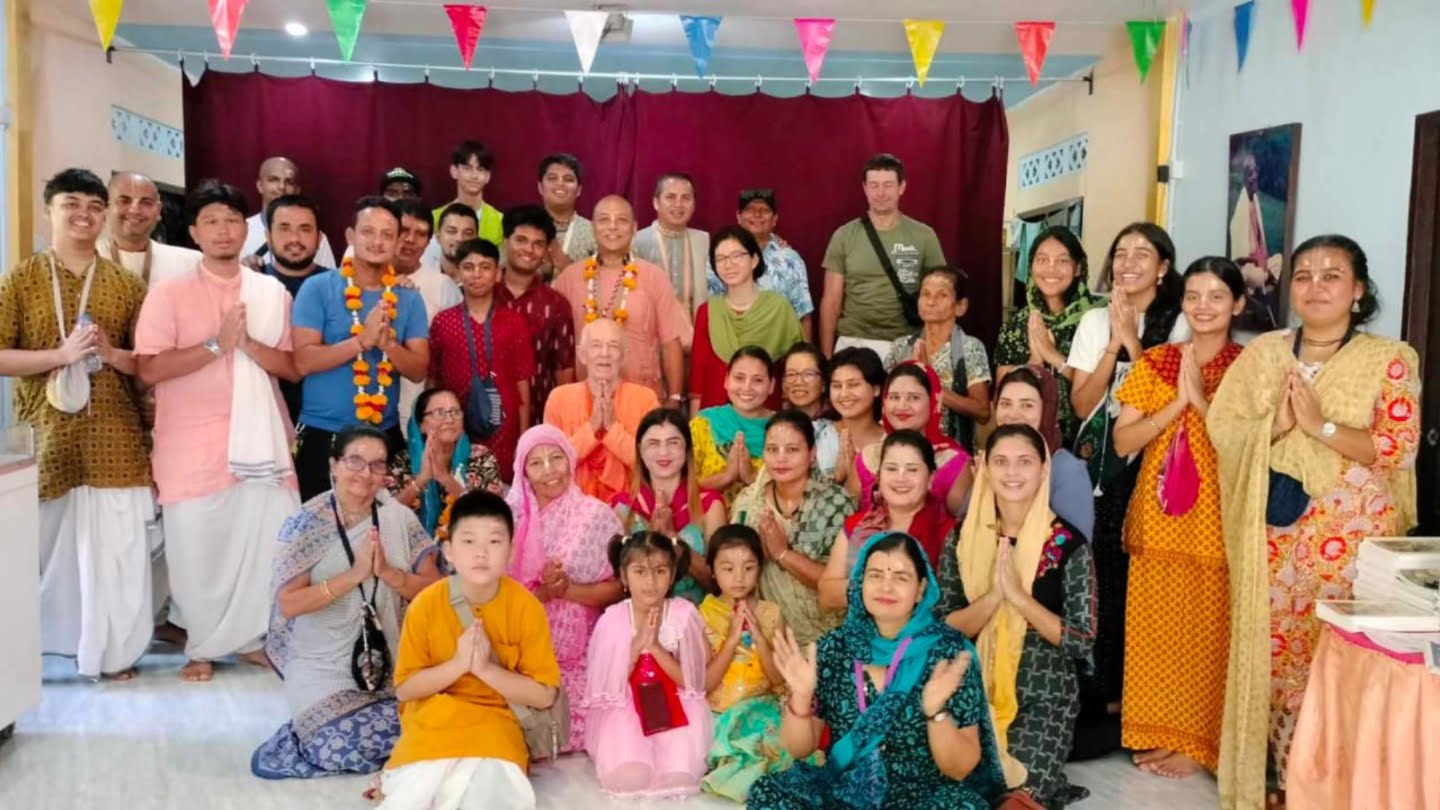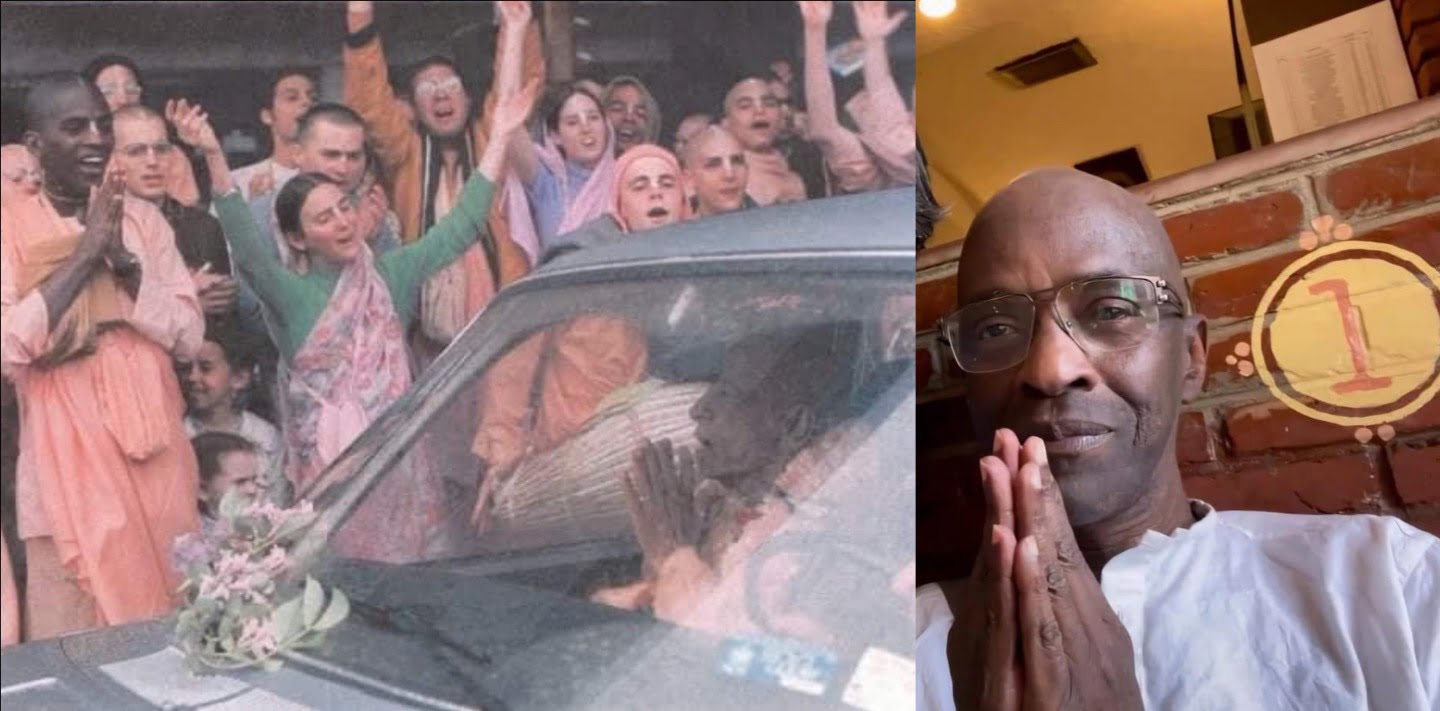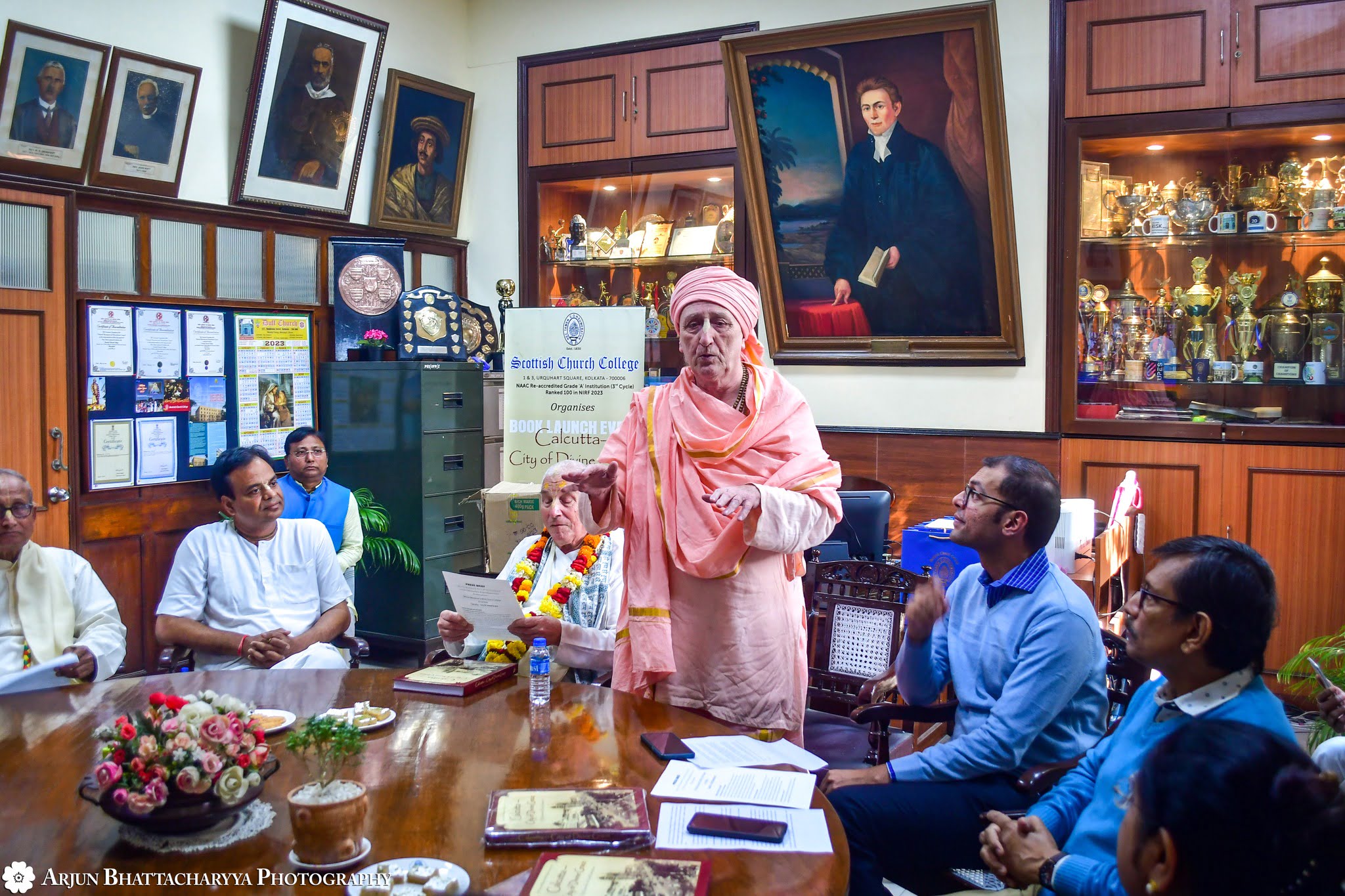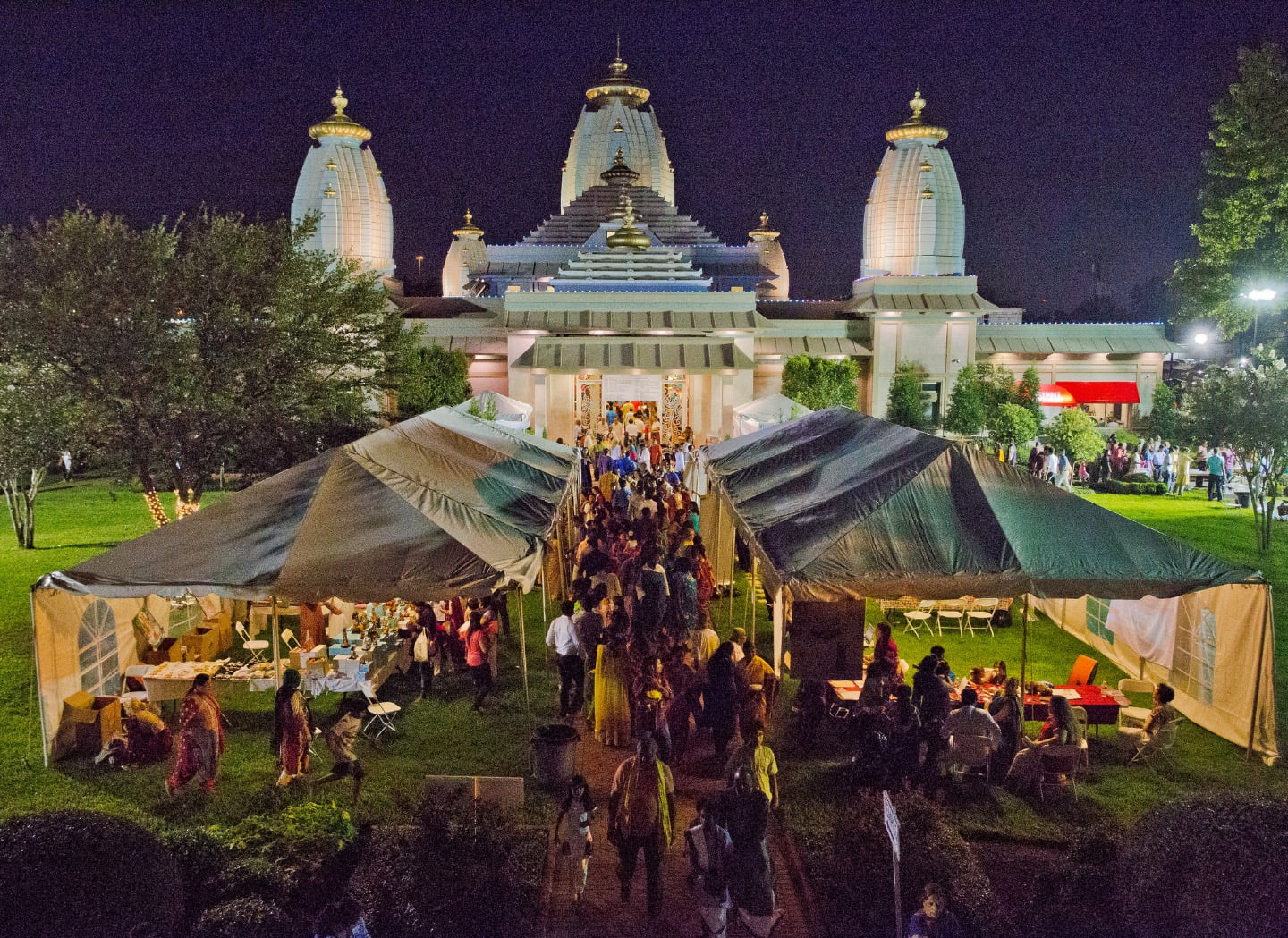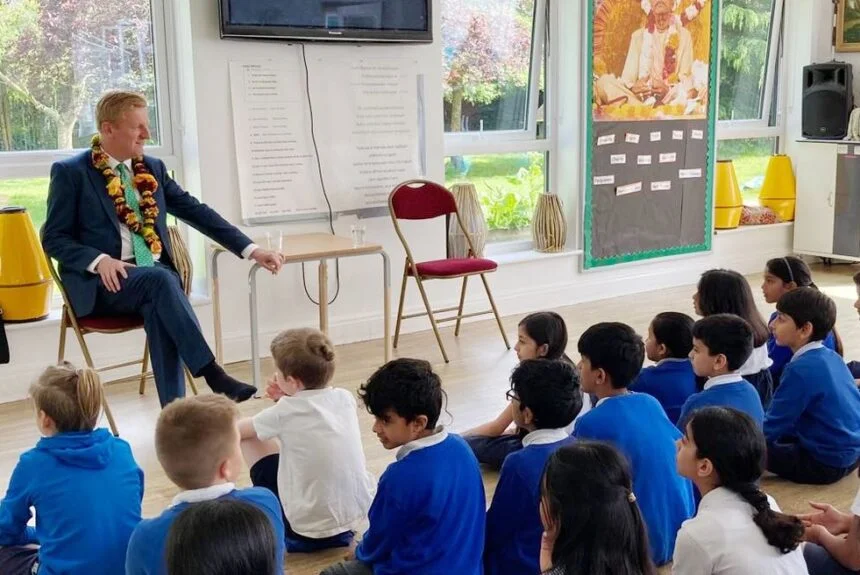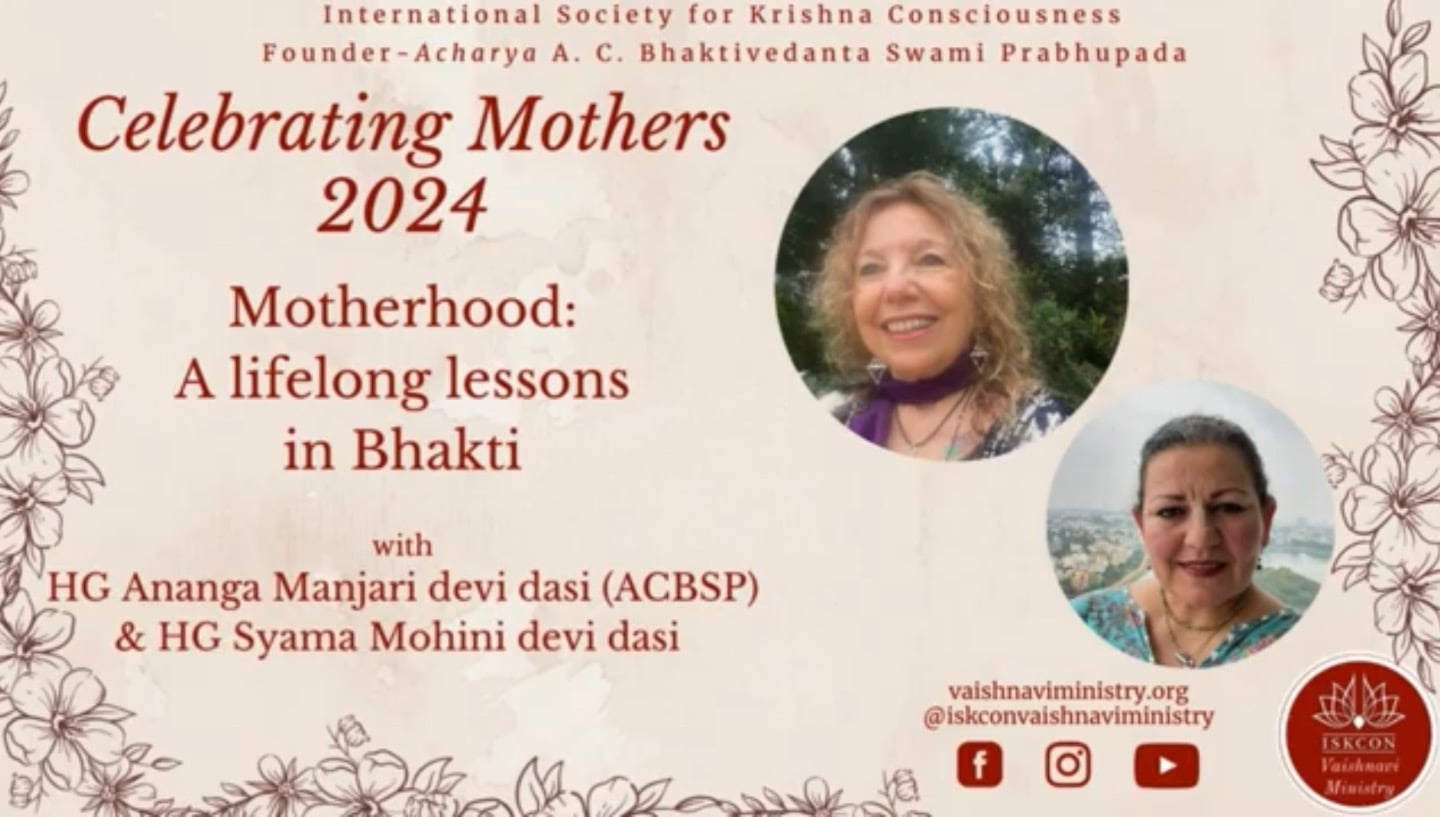New York Pulls Out All the Stops for Sri-Sri Radha Govinda’s 40th
By Madhava Smullen | Июн 16, 2012
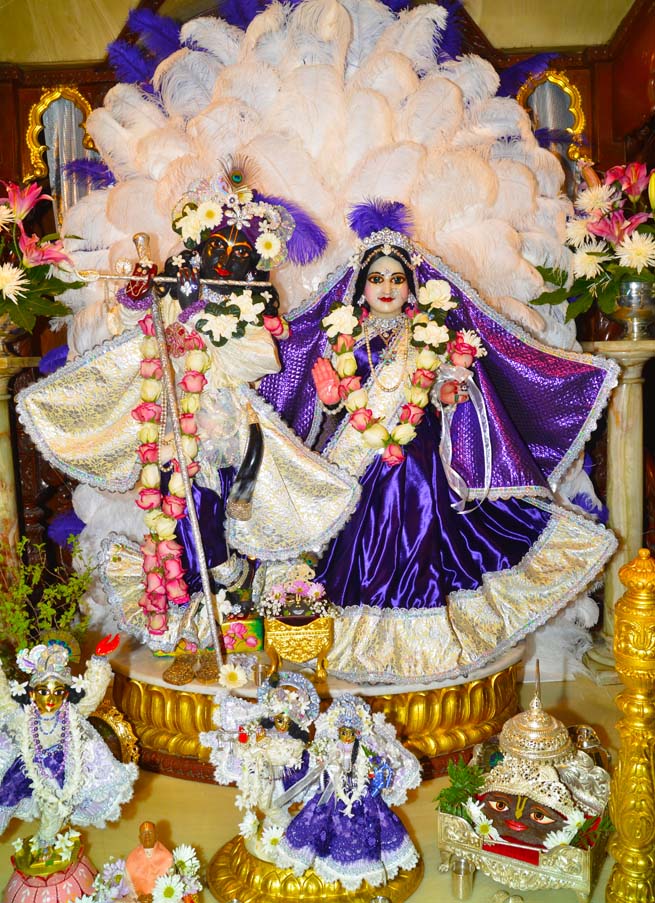
New York’s Brooklyn ISKCON temple has become famous for its epic, multi-day festivals. But this year, in celebration of the 40th anniversary of its presiding Deities, Sri-Sri Radha Govinda, the community pulled out all the stops and threw its biggest festival so far—a ten-day event from June 1st to 10th, drawing thousands of devotees and featuring Ratha-Yatra as its centerpiece.
The special effort is no surprise. Sri-Sri Radha Govinda are uniquely special Deities with a rich history, with whom the devotees have fallen more and more deeply in love with, with each passing year.
Their story begins back in February 1972, when ISKCON founder Srila Prabhupada and his earliest Western followers visited Jaipur, India. There, they were personally hosted by the Queen of Jaipur, Rajmata Gayatri Devi, at the City Palace complex, which also houses the original Govindaji deity of 15th century Vaishnava saint Srila Rupa Goswami.
During the one-week “pandal program” the devotees held for the public in the city, Queen Gayatri Devi presented as a gift to Prabhupada large marble deities of Radha and Govinda, exquisitely carved in white and black marble respectively.
Worshipping them on the pandal stage, Srila Prabhupada commented that they were a reflection of Jaipur’s Govindaji Deity, who was carved by Lord Krishna’s great-grandson Vajranabha from the steps of King Kamsa’s palace, and was confirmed by Pariksit Maharaja’s mother Uttara as looking exactly like Krishna Himself.
Bestowing great mercy upon the devotees of New York, Srila Prabhupada sent the new Radha Govinda Deities to be worshipped at the Brooklyn temple on Henry Street, where They arrived on March 1st and were installed on Gaura Purnima March 3rd, 1972.

Srila Prabhupada pays his respects to Radha Govinda at the old temple on Henry Street
At the Jaipur pandal, Sri-Sri Radha Govinda were worshipped and cooked for by Yamuna Devi. In New York, they were served by a succession of other renowned early devotees. These included Rukmini Dasi, Daivi Shakti Dasi, Baradaraja Dasa, and Shilavati Dasi—now in her eighties—who probably received more information on Deity worship from Srila Prabhupada than anyone else in the history of ISKCON.
“Radha-Govinda are special to a lot of devotees in North America, because many joined ISKCON or served in New York under Their Lordships in those early years,” says Ramabhadra Dasa, who has been the Brooklyn temple president for the past twenty-three years.
In Their first ten years, Sri-Sri Radha Govinda moved constantly: from Jaipur to Henry Street, Brooklyn, in 1972; then on to 340 West 55th St in 1975; and to Seventh Avenue in Manhattan in January 1980. Finally, on November 1st 1982, They moved to Their current temple at 305 Schermerhorn Street in Brooklyn, where They have resided ever since.
Wanting to give these Deities, who have been the center of New York devotees’ lives for the past four decades, a truly spectacular 40th anniversary celebration, Ramabhadra Dasa traveled to Jaipur this February to seek blessings from the original Govindaji.
“The priests there are very kind to me, and allow me into the inner arena, six feet from the Lord, to sit and pray,” he says. “So I prayed intensely to Govindadeva to please bless all the devotees in New York, and to allow us to have a wonderful festival commemorating the 40th anniversary of His reflection, Sri-Sri Radha Govinda.”
Govindaji did not skimp on His blessings.

Indradyumna speaks about Radha Govinda to 1,000 entranced devotees at ISKCON Brooklyn
On Friday June 1st, 500 devotees assembled at Brooklyn’s Radha-Govinda Mandir to inaugurate the festival with an Agni-hotra ceremony, during which they chanted the auspicious Brahma-Samhita prayers and offered oblations in worship of Sri-Sri Radha Govinda. The Deities were then offered the first of forty new outfits of clothing They’ll be presented with throughout Their 40th anniversary year.
Attending the ceremony, and the entire ten days of the festival, were Indradyumna Swami and B.B. Govinda Swami, two traveling spiritual adventurers whose insightful wisdom and rich enthusiasm for Krishna consciousness contributed greatly to the festival’s success. Other senior devotees attending throughout the festival included Bhakti Charu Swami, Radhanath Swami, Romapada Swami, Guru Prasad Swami, and Veda Vyasapriya Swami.
On the evening of the second day of the festival, Snana Yatra, a bathing ceremony for the form of the Lord known as Jagannath—Lord of the Universe—along with his brother Baladeva and sister Subhadra, was observed. As Bhakti Charu Swami spoke about Lord Jagannath’s history and activities, a huge seven-foot tall
Styrofoam Lord Jagannath, with an arm span of six feet, looked on from his place next to Radha-Govinda’s altar.
On Sunday June 3rd, Sri-Sri Radha Govinda appeared in another new outfit, while that afternoon devotees were entranced by Indradyumna Swami’s two-hour historical class on Govindaji and Radha Govinda.
From Monday through Thursday, three-hour Harinamas—public chanting performances—were held in Manhattan, led by Indradyumna Swami, BB Govinda Swami, and virtuoso saxophone player Narahari Dasa. Every evening, the kirtan continued at the temple until well past midnight, with many devotees moved to tears by the heartfelt chanting of the two Swamis, along with Badahari Dasa, Madhava Dasa, Gaura Vani, Ananta Govinda, Achyuta Gopi, and the Mayapuris. On Wednesday evening, Radha Govinda were offered yet another beautiful outfit, while every day, devotees tucked into delicious prasdam—sanctified vegetarian food.

Harinama in New York (from right to left Ananta Govinda Dasa, BB Govinda Swami, Indradyumna Swami and Narahari Dasa on the saxophone)
By Friday evening, 1,000 devotees were packed into the temple, and the excitement had built to a peak for Rathayatra, the ancient parade in which Lord Jagannath is drawn through the streets on a grand chariot. An uproarious reception greeted the arrival of Baltimore’s Jagannath, Baladeva and Subhadra Deities, who originally appeared at the very first New York Rathayatra in 1976.
An incredible 4,000 devotees from across the country and the world gathered the next day, Saturday June 9th, for the Rathayatra parade down New York City’s famous Fifth Avenue.
“It was the largest congregation I’ve seen at a festival, and the best Rathayatra since 1976,” says Ramabhadra. “With B.B. Govinda Swami and Indradyumna Swami leading the kirtan, everyone was in high spirits. They have chanted for almost four decades now, and their chanting has a very powerful effect on the devotees, because their hearts are deeply cleansed.”
After the parade, a colorful “Festival of India” at Greenwich Village’s Washington Square Park, with tents, stalls, performances and food, drew members of the general public interested in sampling ancient India’s spiritual culture.
Traditional Bharat Natyam Dance by Anapayini Dasi’s Bhakti Dancers and theatrical plays by ISKCON New York’s three drama troupes drew audiences of 800 to 1,000 people—the second largest audience for Rathayatra performances in North America, after Toronto.
“And for those interested in the Vaishnava philosophy, we had multiple question and answer booths and a book stall manned by top book distributor Navina Nirada Dasa,” Ramabhadra says. “Then of course, there was the seven-course vegetarian feast, which we served to 10,000 persons, an incredible five thousand of which were devotees.”

BB Govinda Swami, Radhanath Swami and Indradyumna Swami lead Rathayatra down New York’s Fifth Avenue
Possibly the most thrilling of all ten festival days, however, was the final one. Jam-packed with activities, Sunday June 10th began with another beautiful new outfit being offered to Radha-Govinda at 7:30am. Next, forty sumptuous dishes were offered in honor of the Deities’ 40th anniversary. Then, after three hours of kirtan and spiritual discourse led by Indradyumna Swami, 1,000 devotees tucked into a “must-be-seen-to-be-believed” 27-course gourmet brunch.
“In the meantime, we were preparing yet another very special outfit for Sri-Sri Radha Govinda,” Ramabhadra says.
He explains that back in the 1970s at Their Henry Street temple, the Deities were once dressed in a rich purple and white outfit with an ostrich plume backdrop. Prabhupada liked this “darshan” so much that he always kept a picture of it on his desk, and wanted it sent to his Godbrothers to show them how nicely his disciples were caring for Krishna.
“To recreate the outfit and backdrop, I spent three days in Manhattan searching for and procuring 108 of the best ostritch plumes,” says Ramabhadra. “Meanwhile Haripuja Dasi, Gandharvika Dasi and Indradyumna Dasa assembled the backdrop, and our seamstress Antaranga Dasi, sewed the outfit in one night.”
With decorative, atmospheric lighting pervading the temple room, the congregated devotees uttered a collective gasp as the curtains opened at 1:08pm to reveal the recreated historical outfit. Speaking about their Henry Street memories later that evening, senior women Rukmini, Haripuja and Mahamaya commented that the new ostritch plume backdrop looked exactly like the original which Srila Prabhupada had so adored.
After an hour-long drama based on the epic Ramayana, Radha-Govinda were revealed in their sixth and final new outfit of the festival—this time a stunning $3,000 flower affair featuring 208 large high quality gardenias. Devotees erupted into blissful kirtan, led expertly by B.B. Govinda Swami, who allowed only a minimum of instruments so that the Holy Name could be heard clearly. Repeatedly, he stopped the music to ask everyone to chant loudly, from their hearts.
“1,200 devotees filled the temple room, and the hallways were packed with many more looking in from the doorways,” Ramabhadra says. “There were so many devotees dancing in total ecstasy that the temple room floor shook. Everyone said they had never seen or heard anything like it.”
A second drama, depicting the appearance of Sri-Sri Radha Govinda at the Jaipur pandal in 1972, followed, with Sivaradhya Dasa playing the part of Srila Prabhupada and lip-syncing to a recording of the ISKCON founder. Finally, Badhari Dasa, Madhava Dasa and others chanted the Holy Names from 9:30pm until 2:30am, with 150 people holding out until the very end.
A mega-festival to end all festivals, then—but still not enough for the New York devotees, who are determined to spend as much time as possible celebrating Radha-Govinda’s 40th year.
“We’re planning for another five-day festival around Janmastami time in August, a four-day festival around Radhastami in September, and a six-day festival around Govardhana Puja in November,” Ramabhadra says.





